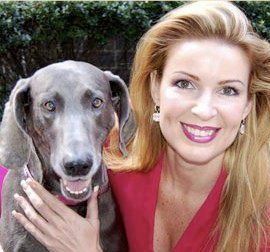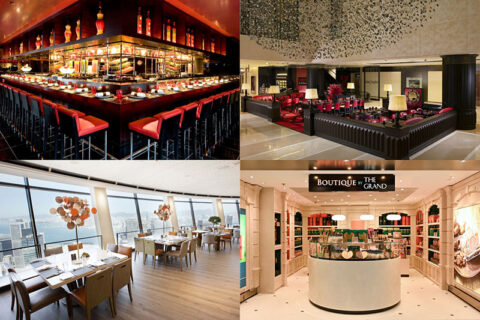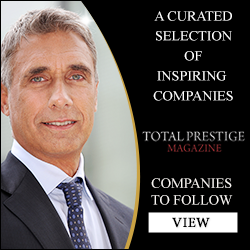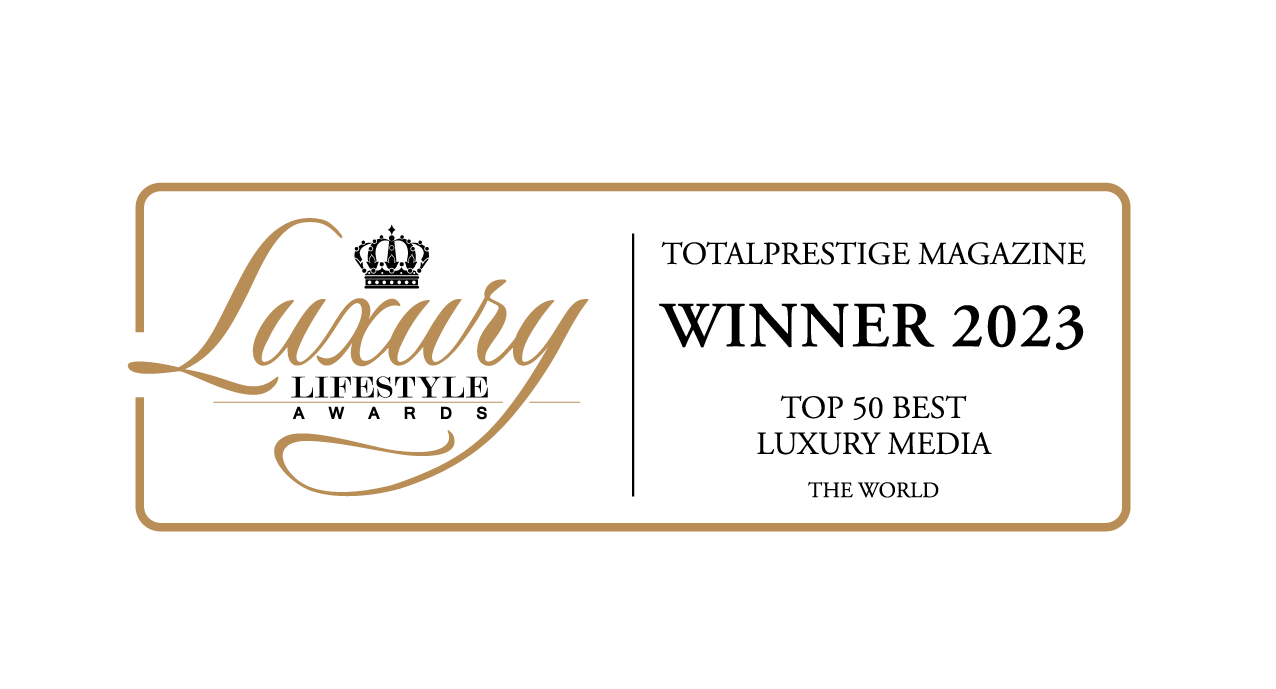There is very little real luxury media. By that I mean there are very few sources that actually reach the UHNW. It takes more than just pretty pictures to reach the wealthiest demographic. It takes bringing them information that is relative to them by someone that they trust .
Several years back I got contacted by a journalist that was being paid by one of the world’s largest news sources, to write a travel article for wealthy travelers for their luxury section. She called me, since I am a Luxury Expert, and wanted to know why wealthy people liked the Caribbean island of St. Tropez so much? First, I pointed out that St. Tropez was not in the Caribbean, secondly that it was not an island, but on the southern coast of mainland France, and thirdly that the UHNW already knew why they liked St. Tropez and so this article would be of more interest to someone much less well traveled and of a lower financial demographic than she was supposed to be targeting. (This is a perfect example of why the UHNW do not follow news sources, but instead individuals that they trust). Simply put, a travel article written by a middle class employee, is most likely not going to be relevant to an UHNW consumer and their expectations of a property/product/event. This is part of the reason that the UHNW are harder to reach.
I got contacted again a few weeks later from another journalist for this world news group’s luxury section. They wanted to do an article about how a properly trained butler was paid a six figure income, and how people could go to school for this. Again, I had to point out that the UHNW are not looking for jobs that pay only six digits, that this topic would be of interest to a working class group. I do not question that there are many people that this information would interest, and even benefit, but it is not the UHNW sector.
If the content includes articles about “What it is like to be a flight attendant on a private jet”, or “What it is like to work on a super yacht”, or “What it is like to be an assistant to a billionaire”, you know that you are on a media source that targets the working classes that have never been on a private jet, yacht, or been a billionaire. If you are looking for the billionaire readers, you need to talk about things of interest to them and their peers, not their staff. This mistake about COVERING the UHNW often gets misconstrued as REACHING the UHNW.
There is also another category, luxury industry media, which is media that targets luxury industry professionals and shares luxury business news. Things like, what type of marketing is working in different luxury industries, trends, statistics, white papers, reports, and information about industry events. Again, this is not media for the UHNW, it is media for people working in the luxury sector. If you go to the twitter hashtag #UHNW it is filled with articles for those that feed off this group, like estate planners, brokers, and private bankers, but not really information FOR the UHNW.

As a luxury marketing consultant I get hired in to evaluate media that is claiming to target the UHNW. Often I find them publishing titles like ” Look at the Ridiculous Shit the UK’s Billionaires Spend Their Cash”, or “Who is stupid enough to pay $5000 for a hamburger” and comments like “More Money than Sense” and are dumbfounded that insulting and belittling the wealthy does not secure them as avid followers. This very middle class thinking will attract other middle class viewers/readers, but not the UHNW. When I point this fact out at meetings it is often met with the management feeling justified because to them it is outside their experience and comfort zone. To be a good marketer (for any group, be that teenage Hispanics girls, mercenaries for hire, or the UHNW) you must divorce yourself from your personal perspectives and think like your target group. A $5000 hamburger is a smaller percentage of their income than $5 at a food chain is to most people. What is “expensive” is relative. The take away from this is, divorce yourself from your personal perspectives and don’t insult the audience you are trying to attract. However, if you want a mass market reader/viewer, nothing attracts him faster than poking fun at the wealthy that they envy. Luxury Marketing is almost the antithesis of mass marketing which is taught in most universities. There is actually a specific LUXURY MBA now offered by some of the top universities. The fastest way to bankruptcy for a business in the luxury sector is the use of inappropriate marketing. What I mean by inappropriate is ‘mass marketing’. Instead of having a CMO, make sure you have a CLMO – someone trained in Luxury Marketing.
I find a great deal of conflicting articles out on the luxury market. The reason is that most journalists are not specifically trained to understand the luxury market and unwittingly publish information that can be misleading. Often times they do not know the industry definitions of different terms .This accompanied by the fact that many readers also have the same limitation, means that there is a lot of confusion. Just one example is the term “affluent”. To the general populace affluent would be interchangeable with the word “wealthy”, but in luxury marketing it has a defined wealth range that it represents in data. The entry point for affluent starts as low as $75,000 annual household income. Thus articles on how “affluents” are reacting, is not indicative of how the HNW, or even more so, how the UHNW are behaving. The reader’s and the journalists’ inexperience in reading and interrupting the luxury marketing data, have them rolling all these very different responding groups into a mishmash that is not accurate.
In addition to not understanding the luxury marketing industry terms, the journalists and their readers bring their middle class perspective. When they write about the luxury market, they tend focus on the low price point brands that they know, like Chanel, Michael Kors or BMW, but do not include most of the elite luxury brands that are not commonly recognized by the middle classes like Pagani, Blohm + Voss, Ferretti, Lürssen, Dassault, Bombardier, etc.

When journalists call me for quotes, they most often ask questions as if all of luxury buying demographics act identically, and thus all the brands/products/ at all price points, are identical in their marketing strategy. I always have to get the journalists to define which group they are interested in get information about. Although both a $300 million dollar yacht, and $600 pair of Chanel sunglasses, are both technically in the luxury sector, and both require luxury marketing, their strategy cannot be compared. This makes it hard to give “simply short answers” to the questions posed about the luxury sector. The lower price point luxuries like fashion, food, perfumes, cosmetics, skin care, accessories etc., rely on the aspirational consumer for 80% of their sales. The yacht company has zero aspirational consumers. The middle classes can save up for a $3000 purse but will never be able to save enough for the $300 million yacht, or jet, or real estate, or private bank, etc. So first you must make sure that you are comparing apples to apples…and not to oranges. The end result is a lot of articles written about the luxury sector that are misleading, because they only represent the bottom portion of the luxury sector, which because of its reliance on the main stream aspirational market (80%), does not necessarily have any real correlation to the true luxury market in general. In other words it is possible to have a situation where designer clothing, accessories, perfumes, cosmetics and other low price point luxuries are down, but jets, yachts, thoroughbred race horses and private banks are booming. The UHNW led the economy on the way out of the financial crisis. The UHNW were not really as affected by it, as the lower classes were. This is why many lower price point luxuries suffered more severely than companies with high price point products. If you are worth a few billion and lose half your net worth, you are still UHNW. These people tend to be more globally diversified in their investing, and often in down turned economies are actually able to grow their net worth. In fact the rich are wealthier now than before 2008. There are overt 226,000 UHNW people globally. Global High Net Worth Millionaires Hold Over $61 trillion in Combined Wealth.

A lot of words get injured in the mass marketing. “Bespoke” like the word “Luxury” and “Haute Couture”, just to name a few, often get misused in an attempt to fool consumers that are not accustomed to the terms, into thinking that they are getting something much better. The word bespoke is a 17 century British term that means “spoken for” and is actually a series of established pattern processes in hand making a man’s suit. A real luxury marketing professional should know the real definitions of these words. Despite the term being technically misused, what they are trying to convey, is that the product and the surrounding service will be stupendous, and specifically created just for you; a one of a kind piece to meet your individualized wants, or “custom made”. These words have been adapted to represent “the utmost in luxury”. But obviously, just because the media uses the word bespoke, it does not make it so. Often you will see the word luxury misused in conjunction with premium brands (top of the mass market).
The middle classes value money over time. They will spend time clipping coupons, figuring out credit card incentive programs, fly on different days, and in general, spend whatever time saves them money. The UHNW are the opposite, they would rather use their excessive amount of dollars, to spare their most valued commodity, time. When you see media use the words discount, coupons, sale, cost cutting, inexpensive, affordable, value, bargain, you can be assured that they are targeting an aspirational group. When UHNW see this verbiage, they know that this media source is not aimed at them, and they steer away.
The use of celebrities is very successful in reaching the middle financial levels, but not in reaching the UHNW that could financially buy and sell most celebrities many times over. The celebrities aspire to be the UHNW, not the other way around. So when you see so called luxury media that focuses on celebrity gossip, you know that it does not have a wealthy following. Do you think Warren Buffett aspires to smell like Michael Jordan’s, or Sean John (P. Diddy’s) cologne? When the articles are about how to dress like a celebrity, or low price point luxuries like the handbag du jour, or what shade of red is hot on the catwalk, you know you are looking at media targeting aspirationals. If you want UHNW readers/viewers, use individuals that they trust, and don’t waste their time with things that they are not interested in.

Lorre is a luxury marketing consultant for companies that need to reach the Ultra High Net Worth, who also makes appearances on TV, radio and the Web as the only International Luxury Media Personality “The Luxury Guru”.











